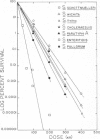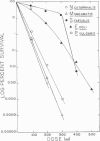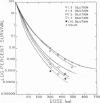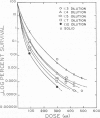Abstract
When 15 bacterial species representing genera associated with food-borne diseases were irradiated individually, all except Escherichia coli and Streptococcus faecalis showed typical linear dose-survival curves in Hartsell's broth. The minimal lethal dose (MLD) for the organisms tested ranged from 3.0 × 105 to 6.0 × 105 rad. Salmonella paratyphi B, S. wichita, S. typhi, E. coli, and S. faecalis were found to be the least sensitive to radiation. In commercially canned crabmeat the survival curves of S. typhi, S. paratyphi B, and S. wichita exhibited to varying degrees an initial linear death decline with increasing radiation doses, followed by a distinct tailing effect caused by survival of low numbers at the higher doses. The above species of Salmonella were further individually subjected to γ-radiation in various dilutions of crabmeat. The “tailing effect” gradually disappeared, with the dose-survival curve tending to become linear as the concentration of the crabmeat decreased.
Full text
PDF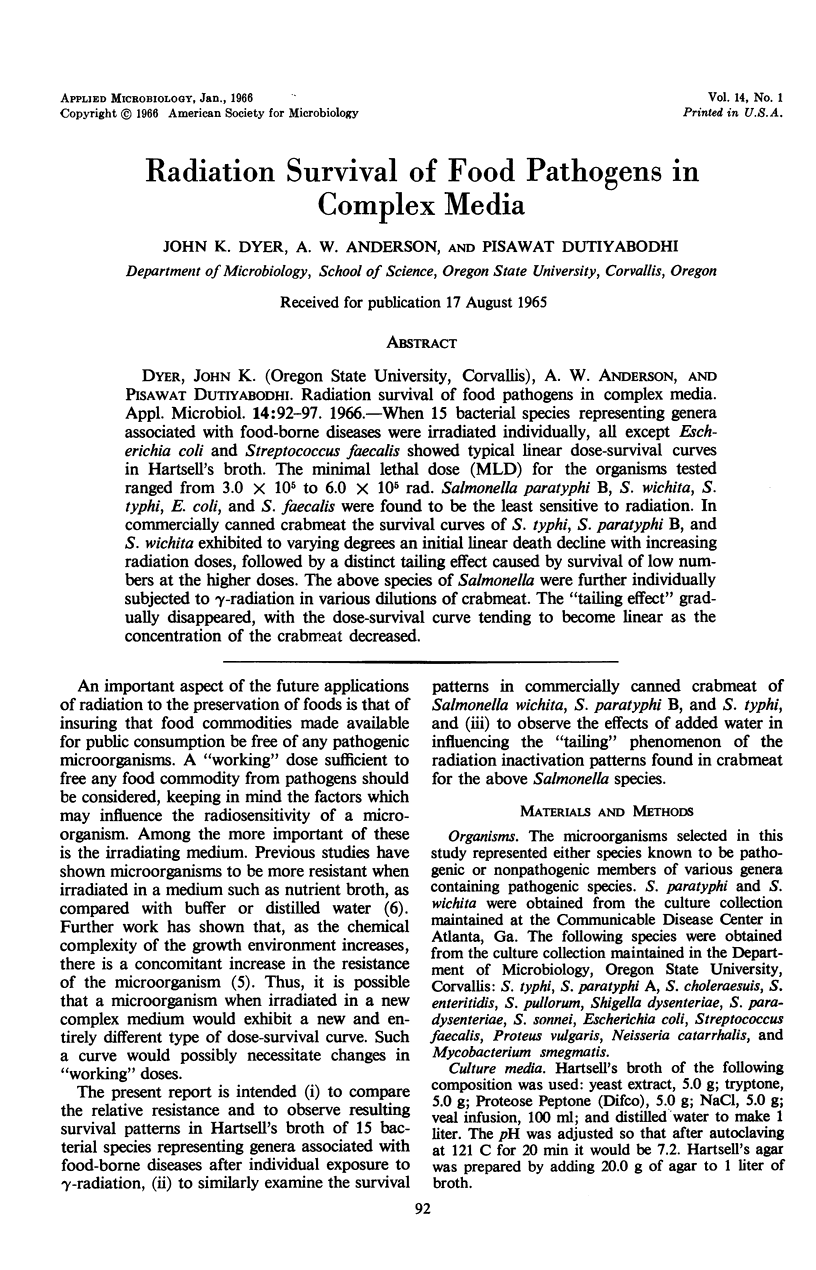
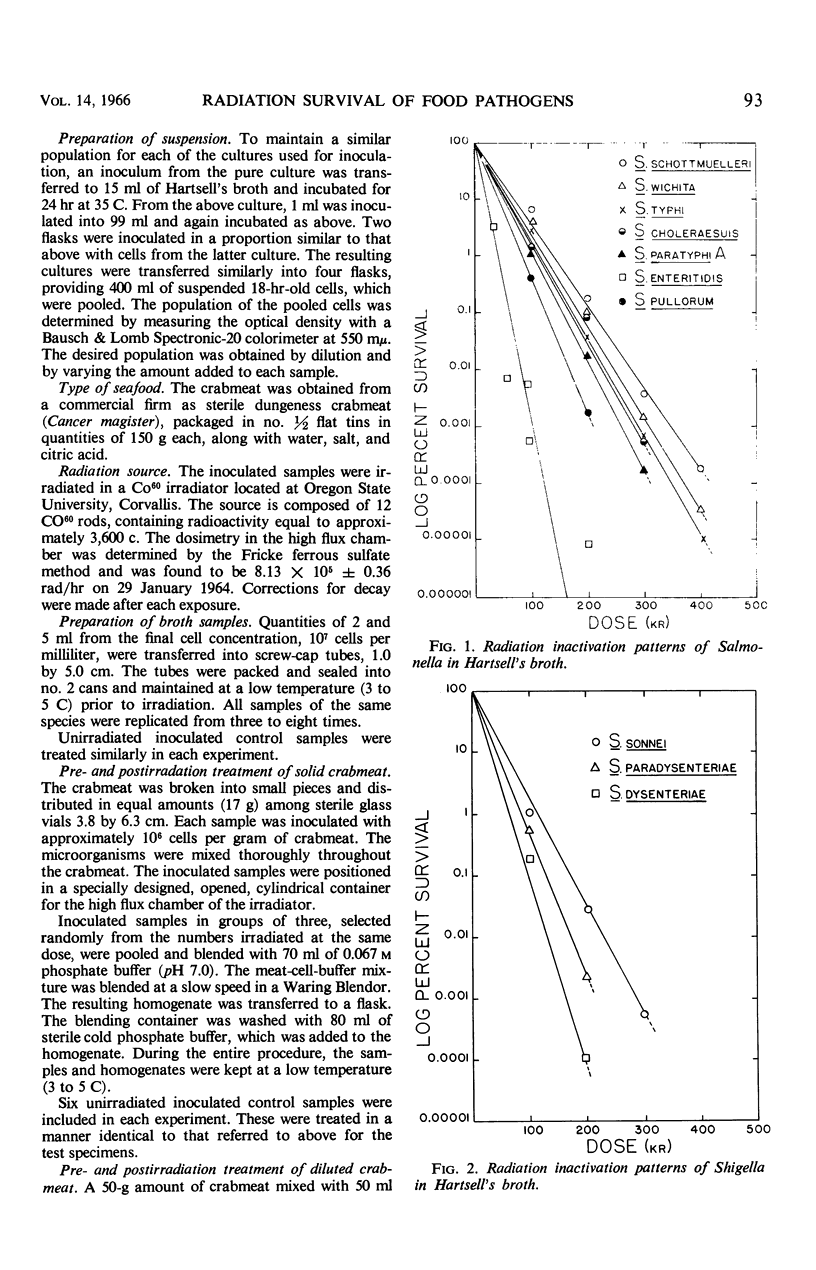
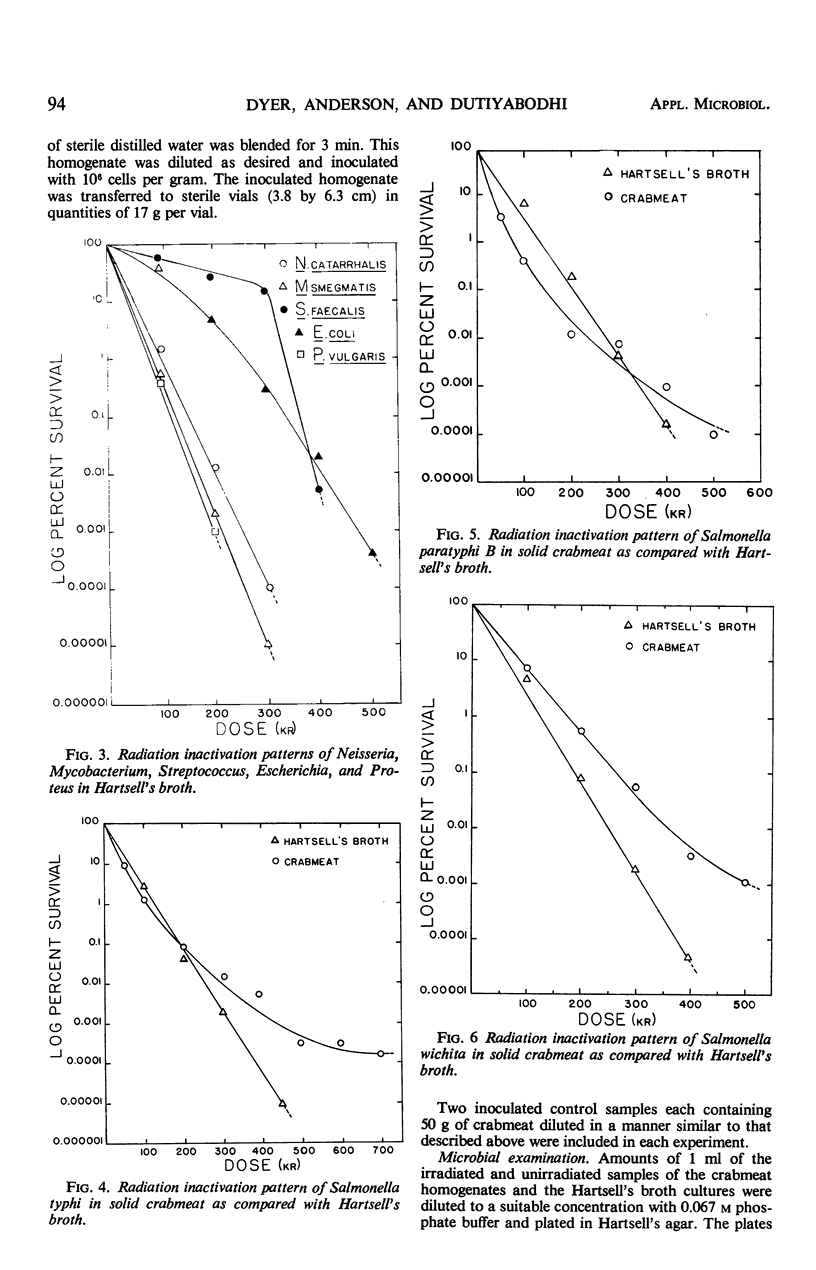
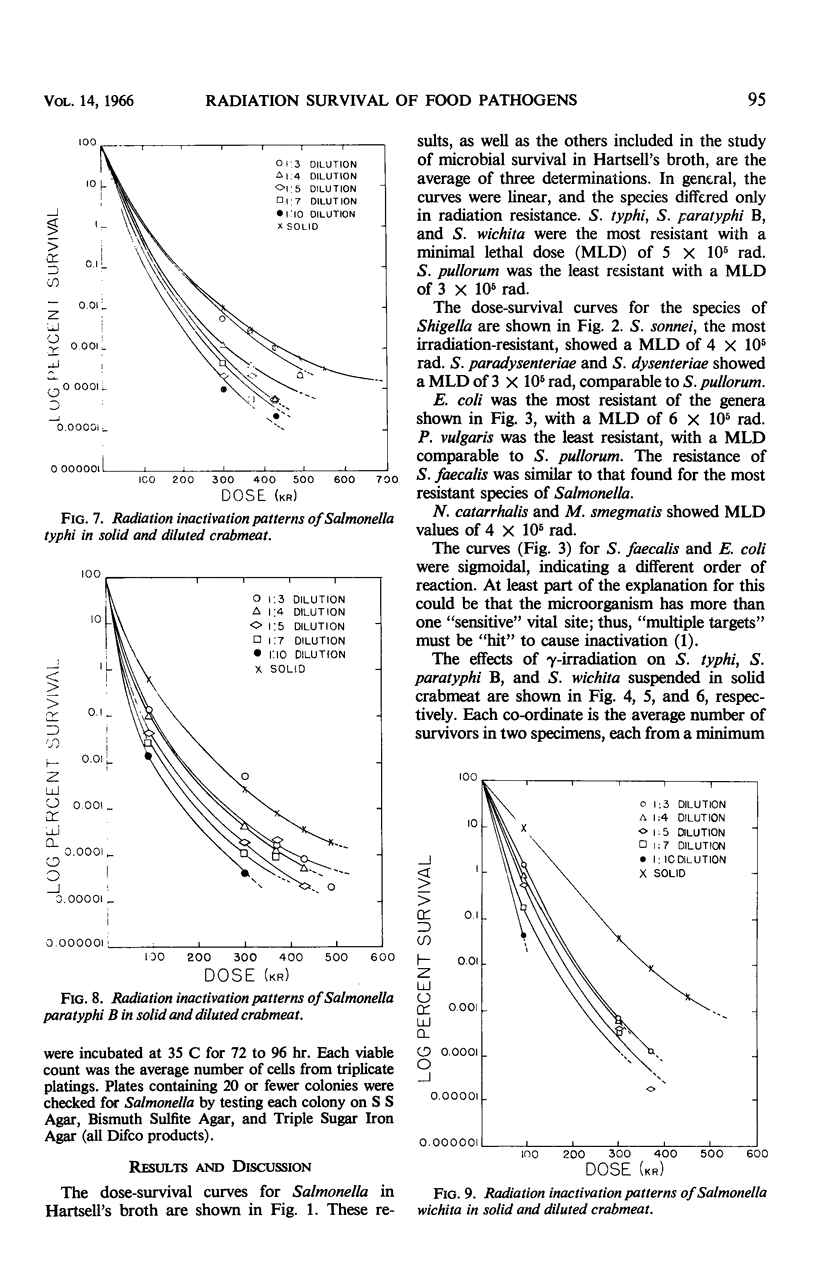
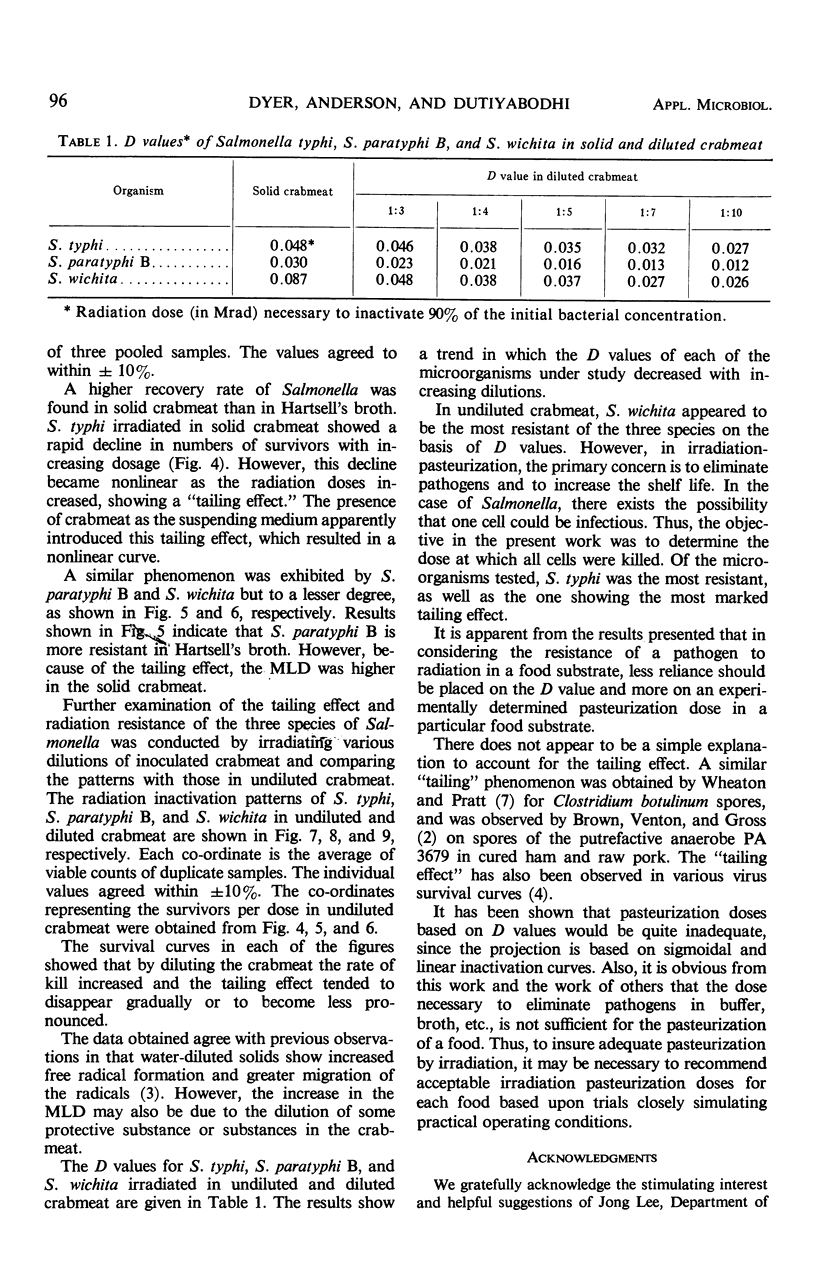
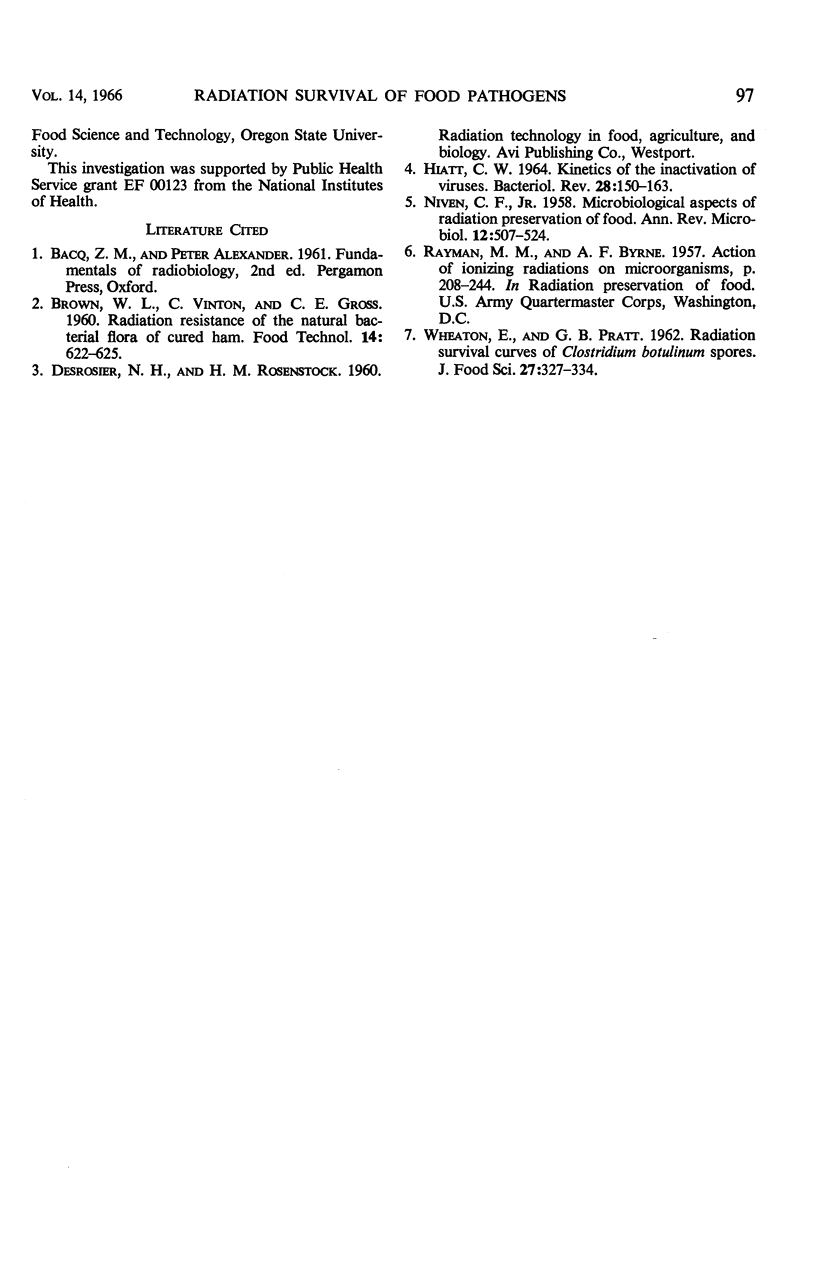
Images in this article
Selected References
These references are in PubMed. This may not be the complete list of references from this article.
- HIATT C. W. KINETICS OF THE INACTIVATION OF VIRUSES. Bacteriol Rev. 1964 Jun;28:150–163. doi: 10.1128/br.28.2.150-163.1964. [DOI] [PMC free article] [PubMed] [Google Scholar]
- NIVEN C. F., Jr Microbiological aspects of radiation preservation of food. Annu Rev Microbiol. 1958;12:507–524. doi: 10.1146/annurev.mi.12.100158.002451. [DOI] [PubMed] [Google Scholar]



